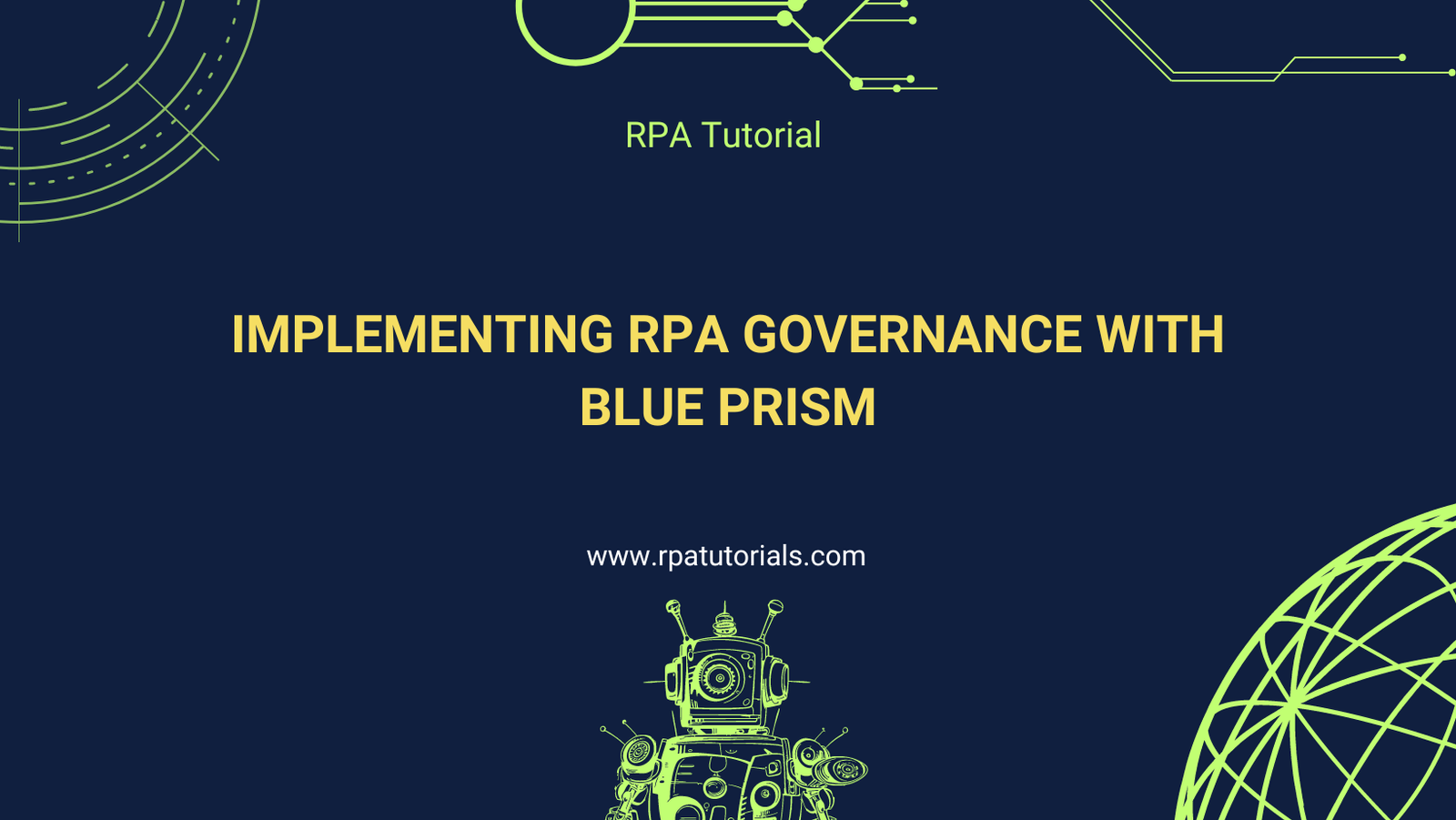As organizations increasingly adopt Robotic Process Automation (RPA) to enhance efficiency and productivity, the need for robust governance frameworks becomes critical. Effective RPA governance ensures that automation initiatives align with business goals, comply with regulations, and mitigate risks. In this blog post, we will explore how to implement RPA governance using Blue Prism, focusing on best practices, key components, and strategies for success.
Table of Contents
- What is RPA Governance?
- Why RPA Governance is Important
- Key Components of RPA Governance
- Best Practices for Implementing RPA Governance with Blue Prism
- Monitoring and Continuous Improvement
1. What is RPA Governance?
RPA governance refers to the framework and set of practices that ensure the successful implementation, management, and scaling of RPA initiatives. It encompasses the policies, standards, and procedures that guide the development, deployment, and maintenance of automation solutions.
2. Why RPA Governance is Important
Implementing RPA governance is essential for several reasons:
- Alignment with Business Objectives: Ensures that automation initiatives support and enhance business goals.
- Risk Management: Helps identify and mitigate risks associated with RPA deployments.
- Compliance: Ensures that automation processes adhere to regulatory requirements and organizational policies.
- Scalability: Facilitates the efficient scaling of RPA initiatives across the organization.
3. Key Components of RPA Governance
Effective RPA governance involves several key components:
- Governance Framework: A structured framework outlining the governance model, roles, and responsibilities.
- Standard Operating Procedures (SOPs): Documented procedures for developing, testing, deploying, and maintaining automation solutions.
- Compliance and Risk Management: Policies and controls to ensure compliance with regulations and manage risks.
- Performance Monitoring: Mechanisms for tracking and evaluating the performance of RPA bots.
- Continuous Improvement: Processes for regularly reviewing and improving RPA initiatives.
4. Best Practices for Implementing RPA Governance with Blue Prism
Implementing RPA governance with Blue Prism involves adhering to best practices that ensure robust and scalable automation solutions:
a. Establish a Governance Framework
- Define Roles and Responsibilities: Clearly outline the roles and responsibilities of stakeholders, including the RPA Center of Excellence (CoE), IT, and business units.
- Create a Governance Model: Develop a governance model that specifies the decision-making process, escalation paths, and approval workflows.
b. Develop Standard Operating Procedures
- Process Documentation: Ensure that all automation processes are thoroughly documented, including process maps, requirements, and design documents.
- Code Standards: Establish coding standards and guidelines to ensure consistency and maintainability of automation scripts.
c. Implement Compliance and Risk Management Controls
- Access Controls: Define and enforce access controls to restrict unauthorized access to RPA environments and data.
- Audit Trails: Maintain detailed audit logs to track changes, access, and activities within the RPA platform.
d. Monitor Performance and Metrics
- Performance Dashboards: Use Blue Prism’s monitoring tools to create performance dashboards that provide real-time insights into bot performance and efficiency.
- Key Performance Indicators (KPIs): Define KPIs to measure the success of automation initiatives, such as bot utilization, error rates, and process cycle times.
e. Foster a Culture of Continuous Improvement
- Regular Reviews: Conduct regular reviews of automation processes to identify areas for improvement and implement changes.
- Feedback Mechanisms: Establish feedback mechanisms to gather input from stakeholders and end-users to refine and enhance automation solutions.
5. Monitoring and Continuous Improvement
Ongoing monitoring and continuous improvement are vital for the long-term success of RPA initiatives:
- Regular Audits: Perform regular audits to ensure compliance with governance policies and identify potential issues.
- Update Governance Framework: Continuously update the governance framework to incorporate lessons learned, best practices, and changes in regulatory requirements.
- Training and Development: Invest in training and development programs to keep the RPA team updated on the latest Blue Prism features, best practices, and industry trends.
Conclusion
Implementing robust RPA governance with Blue Prism is essential for maximizing the benefits of automation while minimizing risks. By establishing a comprehensive governance framework, adhering to best practices, and fostering a culture of continuous improvement, organizations can ensure their RPA initiatives are successful, scalable, and sustainable. Start implementing these strategies today to unlock the full potential of Blue Prism and drive your automation journey forward.
